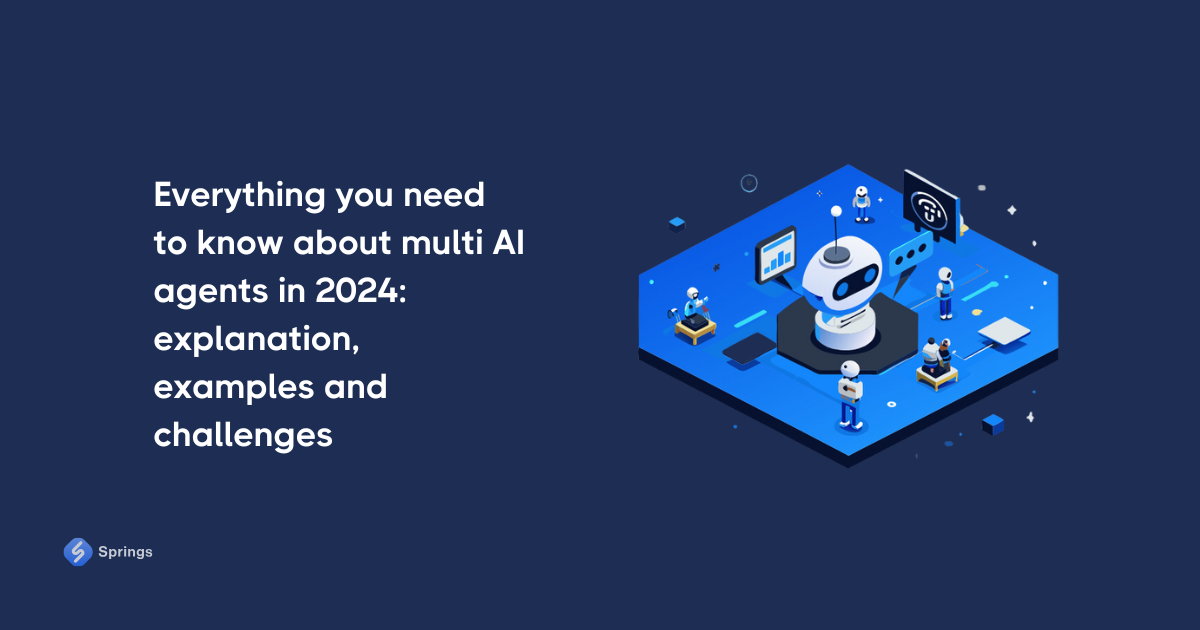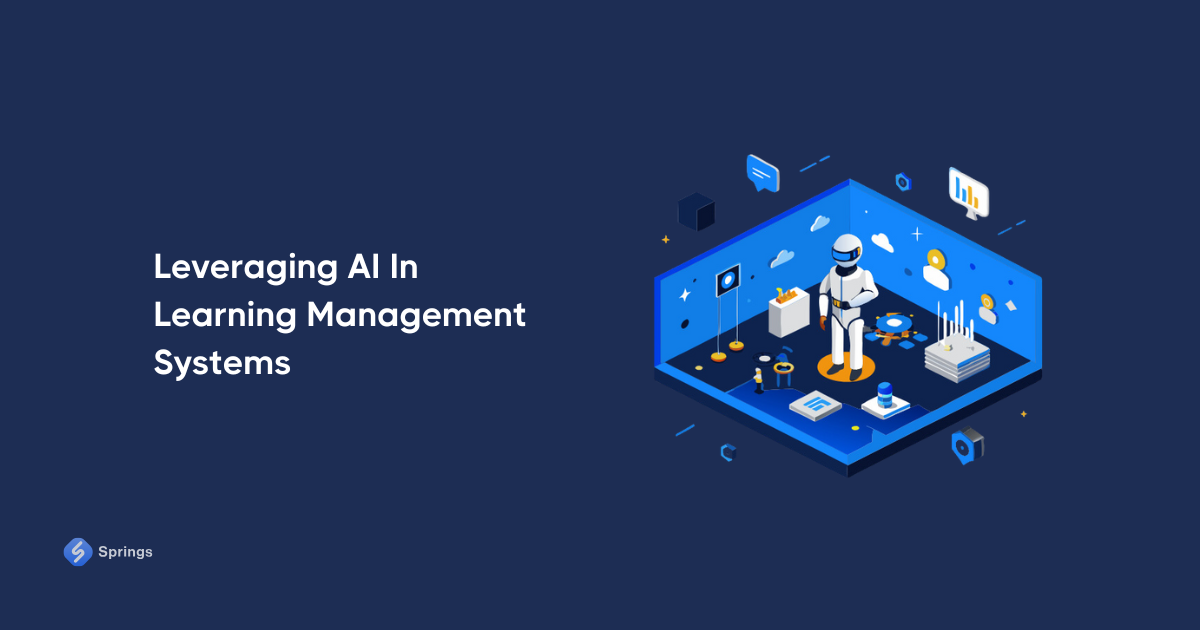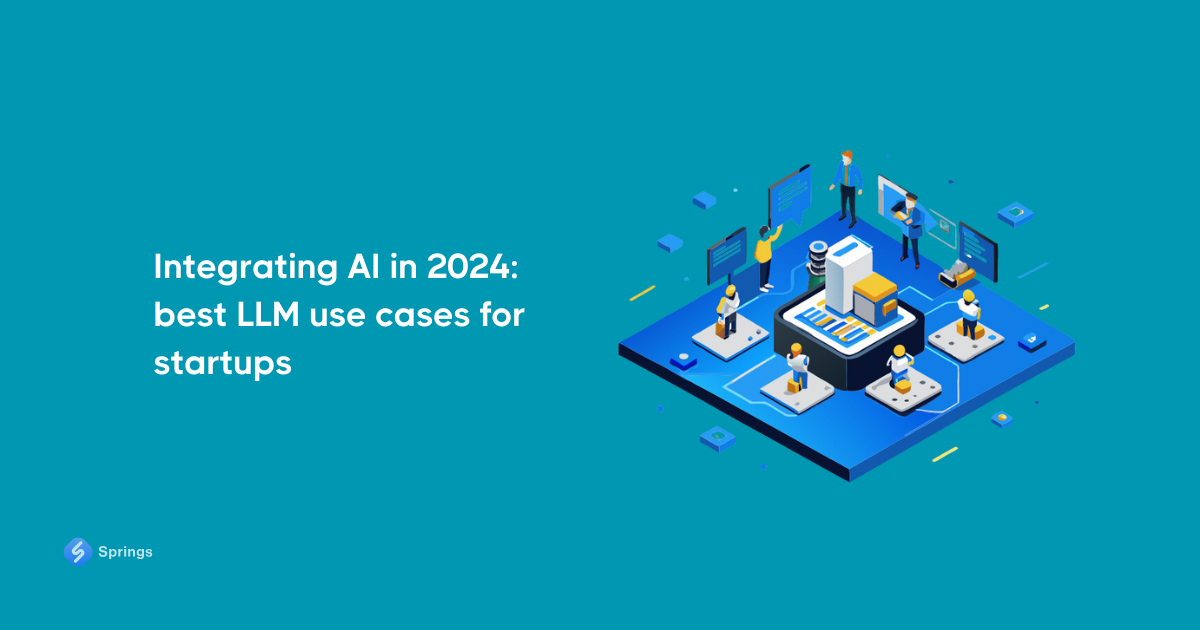Generative AI In Education: Main Trends For 2024
According to the latest data, the market for generative AI solutions is expected to reach $207 billion by 2030. In 2020, this figure was only $56.7 billion and $23.17 billion in 2022. One of the driving forces of this progress has been attributed to educational services. Currently, they have some of the highest adoption rates among all organizations.
Institutions worldwide recognize the impact of generative AI technology on the learning process. In the past few years, it transformed how educators tailor programs and how collegegoers approach their assignments. The latest statistics show that 58% of all university instructors use generative AI in their daily practice.
This surge in use cases goes beyond using ChatGPT to make individual tests and quizzes. This technology can make learning more inclusive and engaging for all parties. Several AI technology trends in education will dictate how this field will develop in 2024.
Table Of Contents:
- Generative AI Trends in Education 2024
- 1 Trend: Using Generative AI to Make Educational Content
- 2 Trend: Teaching With Virtual Avatars
- 3 Trend: New Opportunities For Arts Students
- 4 Trend: Personalized Learning Experience
- 5 Trend: Inclusive Education
- 6 Trend: Student Support
- 7 Trend: Intelligent Tutoring
- Challenges Associated With Using AI In Education
- Conclusion
1 Trend: Using Generative AI to Make Educational Content
Generative AI is about saving time and producing quality content on a budget. Educational institutions will continue using tools like Bard and DALL-E2 to make slick and exciting materials for their students at no expense and effort.

More advanced solutions allow them to provide vibrant slides or create course and topic glossaries. This approach will make lectures and video lessons more exciting and make it easier for students to refresh their memory about specific terms and notions. Here’s why content will remain one of the biggest education trends in 2024 and beyond:
Time saving. AI tools produce readily available content in a matter of minutes. This leaves teachers and professors more time to polish materials without spending hours researching and compiling them.
Reduced costs. All types of learning institutions benefit from generative AI and provide a decent education even in the farthest parts of the world.
Consistency. The use of these platforms allows organizations to maintain the same level of quality across various subjects and topics.
2 Trend: Teaching With Virtual Avatars
Artificial intelligence will provide all colleges with an easy and affordable way to make video lessons. Instead of paying actors or having the faculty record them, the implementation of AI in education will allow making them with virtual avatars. All that is required is to upload a photo of a real person or use one of the existing profiles.
These avatars speak in multiple languages and offer personal education for students worldwide. Platforms like Elai.io, Synthesia, and Heygen provide these services to higher-learning organizations and everybody interested in them. Using these tools opens several opportunities:
Teacher avatars. For example, Harvard will use this technology to have Professor Steven Pinker teach courses on psychology in Chinese or Arabic.
More flexible and scalable learning process. College education will become more accessible for students with different learning styles.
Better adaptability for international college attendants. Students from Brazil or Argentina can sign up for online courses and attend even if they speak little English.
3 Trend: New Opportunities For Arts Students
In the coming year, generative AI in education will enhance the arts departments. Tools like Runway and Midjourney allow students to experiment with different painting styles and methods. More advanced solutions show them video tutorials on how to achieve mastery of these techniques.

It’s also possible for collegegoers to use generative AI as inspiration and a source of new ideas. In addition to art styles, they can experiment with literary tools and architectural design elements and find new combinations. Several aspects of this technology make it a powerful tool for art students:
Quick and free access. AI tools let education pursuers experiment with different themes and styles.
Seamless collaboration. These platforms help students work on joint projects and seamlessly merge art techniques.
Design assistance. AI tools help individuals by suggesting compositions, layouts, and color palettes for their works.
4 Trend: Personalized Learning Experience
The latest technology trends in education are all about the effective use of data. Gen AI products gather information on academic performance, learning styles, and students’ strong and weak sides. This helps develop teaching strategies that adapt to the personal needs of all students. Research by Knewton shows that AI content improved the test results for 62% of respondents.
Some have a better time learning by learning, while others prefer video or audio formats. With these products, it will be easy to provide high-quality and affordable study content. Generative AI tools will play a big role in the future of education due to several factors:
High customizability. Educators can instantly make learning content for different categories of students that is tailored to their backgrounds and academic levels.
Improving problem areas. Generative AI tools don’t just let people focus on their strong academic sides. With the right approach, they help students address their gaps in knowledge.
Better progress tracking. These solutions are often integrated into existing progress-tracking software to provide a comprehensive picture of individual achievements and performance.
5 Trend: Inclusive Education
In addition to high adaptability to different learning practices, generative AI helps people with physical and learning disabilities achieve better results. Speech-to-text and text-to-speech platforms are some of the leading education trends 2024 will introduce.
They make it possible to adapt study materials for people with auditory and visual impairments. Educational institutions will continue to use generative AI as an affordable way of making audio materials, visual aids, and subtitles to existing course materials. In 2024, the technology will help transform the educational field in several areas.
Emotion recognition. Generative AI solutions assess the sentiments of students and support them or adapt content based on emotional cues.
Additional inclusivity. These tools allow educational institutions to provide materials for all types of learners without spending too much time on making them.
6 Trend: Student Support
The use of generative AI in education isn’t confined to producing educational materials. Many institutions use them to help students better adapt to their academic life. These tools serve as intelligent chatbots that provide information about the different aspects of the study process.

The widespread implementation of AI in education will provide support whenever students need it. Modern solutions can help them with course registration, payment processing, extracurricular activities, and selecting courses. These tools are always there to give them detailed and accurate answers. They offer great help thanks to these characteristics:
The ability to work with vast datasets. Educational organizations can teach generative AI products to provide information about all kinds of facts about the faculty, the curriculum, and the learning process organization.
Fast response times. Artificial intelligence apps provide fast answers to any questions people might have in the blink of an eye.
24/7 availability. Chatbots and virtual helpers equipped with generative AI tech are accessible even when none of the faculty members are there to talk to.
7 Trend: Intelligent Tutoring
In 2024, generative AI in the education sector will continue to impact it by offering affordable tutoring assistance. Students turn to Bard and ChatGPT to ask for clarification on various topics, notions, and phenomena. These are a great alternative to reading through textbooks or conducting web research.
Modern solutions will also allow students to break down complex topics into simpler components and let them find connections between them. For example, it’s possible to ask a generative AI tool to explain the human respiratory system and how each part plays a role. AI-based tutors will play a crucial role in the future of education as they are:
Provide interactive learning content. Generative AI applications create engaging learning content like videos, quizzes, and simulations to explain new and old information better.
Give instant feedback. With these tools, students get instant assessments of their work on projects and quizzes, providing information on areas that need improvement.
Recommend study plan adjustments. Modern generative tools and platforms adjust individual learning programs based on a person’s goals, knowledge, and learning preferences, emphasizing skills that require the most attention.
Challenges Associated With Using AI In Education
Although generative technology trends in education will play a big role in 2024 and beyond, educators still face several issues associated with using these products. The most pressing of these challenges are:
Deep Fakes. Modern AI products produce life-like videos of pretty much anyone in the world. This puts collegegoers at risk of coming across generated content that looks legitimate on the surface. Other web users can utilize these tools to spread misinformation, hate speech, and wild conspiracy theories.
Fraud. Educators will have to learn how to determine if the content was made by an AI or by the student. Of course, many platforms detect AI-made writing, but the proficiency of generative tools grows by the day. This development will make it harder to recognize if the content is original or AI-based.
Hallucinations. This issue lies with the nature of AI products. Sometimes, they malfunction, resulting in inaccurate, unrelated, or nonsensical information. Everybody involved in education should be aware of this and fact-check everything provided by these solutions.
Privacy Issues. Modern AI tools gather large amounts of sensitive data, which includes student and organization information. Educational institutions must have detailed policies about data security, storage, and sharing to avoid leaks or unauthorized access.
Conclusion
The learning landscape is quickly changing before our eyes, thanks to the possibilities brought by AI technology. To ensure that education trends in 2024 will benefit students and educators, institutions must teach both parties how to use artificial intelligence properly. Only this way will it be able to become a great study and educational aid while keeping the spirit of learning alive.





